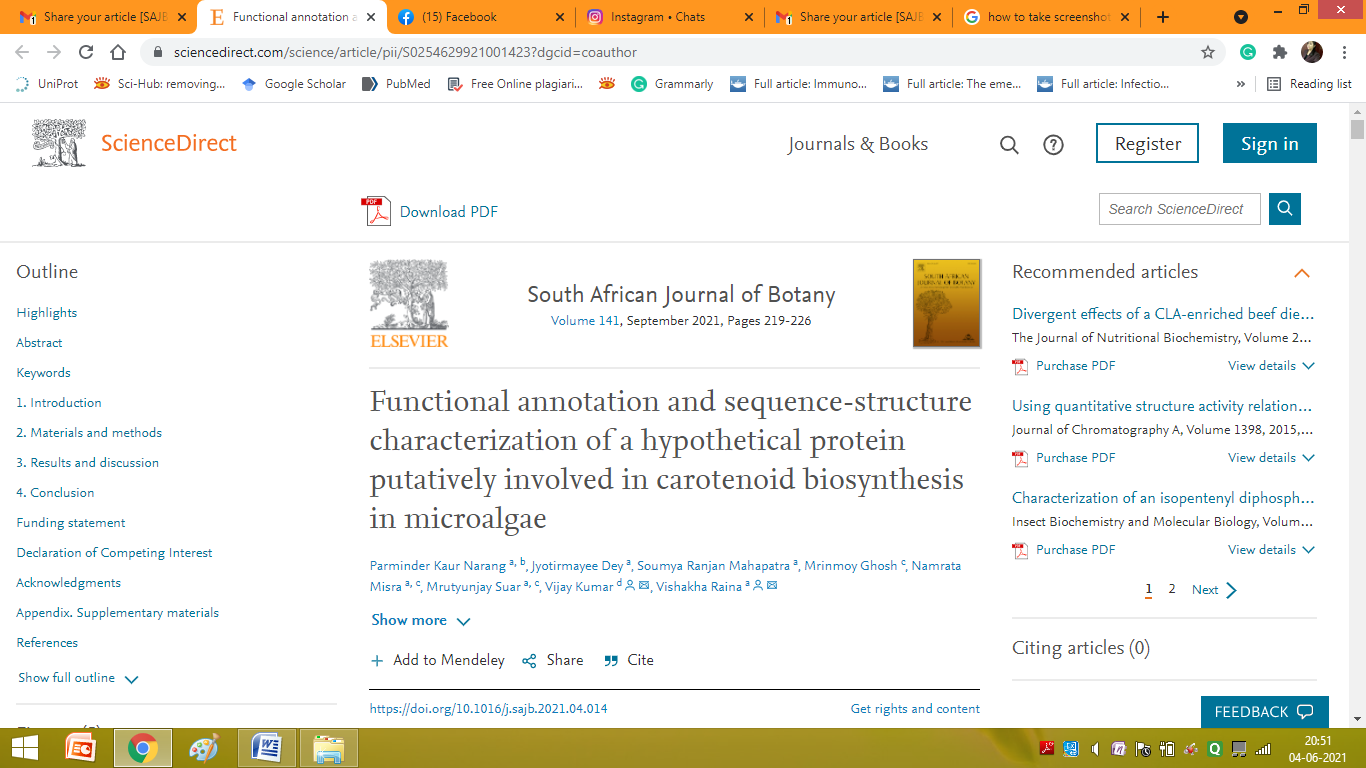Published on May 2021 | Bioinformatics, Phycology

Microalgae are widely used for commercial production of carotenoids and are an excellent model for the study of carotenogenesis metabolism in plants. Genetic engineering of microalgae to increase or knockdown enzymatic activities is one viable approach to accumulate desired carotenoids with higher productivity. Recently, various genome sequencing projects have led to accumulation of plethora of algal genomic data; however, majority of the protein coding genes are yet to be functionally characterized and these gene products are termed as hypothetical proteins. Identifying and functional annotation of these proteins can pave the way for better understanding of algal carotenoid biosynthetic pathway and can indicate targets for genetic modification. In the present study, bioinformatics analysis was employed to predict the function of a hypothetical protein from the model microalga Chlamydomonas reinhardtii. The retrieved sequence was functionally and structurally characterised through determination of their physico-chemical properties, sub-cellular localisation, conserved domain and motif search. Conclusively, the results possibly define the putative role of the protein as phytoene desaturase enzyme catalysing the rate limiting step in biosynthesis of important carotenoid pigment known as lycopene. Furthermore, homology modelling and docking analysis helped to determine the three-dimensional structure and underpinning residues in the active site region that are involved in interaction with the cofactor flavin adenine dinucleotide. The analysis reported here can be potentially utilised for further experimental validation and to expedite genetic improvement efforts for increased carotenoids productivity.